Cengage Financial Algebra 1st Edition Chapter 3 Exercise 3.7 Banking Services
Page 157 Problem 1 Answer
Given: Periodic deposit amount(P)=$5000
Annual interest rate expressed as a decimal(r)=0.045
Number of times interest is compounded annually(n)=1
To find: The account balance(B) if the length of investment in years(t) is 21 years
Solution: We will find the account balance using the formula for future value:
B=P((1+r/n)nt−1)/r/n
We will substitute the values in the formula to find the account balance
B=P((1+r/n)nt−1)/r/n
=5000((1+0.045/1)(1)(21)−1)/0.045/1
=5000((1.045)21−1)/0.045
≈168915.68
The account balance will be$168,915.68 if Rich and Laura decide to hold off retirement for an extra year.
Page 158 Problem 2 Answer
Given: From Example1, Example2 and check your understanding question after example1
we have the following details regarding periodic investment by Rich and Laura :
Total amount deposited in 21
Read and Learn More Cengage Financial Algebra 1st Edition Answers

years=5000×21=$105,000
Balance in the account after 21 years=$168,915.68
Interest they will earn after 20 years=$56,857.11
To find: How much more interest would Rich and Laura earn by retiring after 21 years?
Solution: We will first find the interest earned if they retire after 21 Years Then we will compare it with the interest earned if they retire after 20 years.
We will first find the interest Rich and Laura will earn if they retire after 21 year.
Interest= Account balance− amount deposited
=168,915.68−105,000
=$63,915.68
The interest they will earn if they retire after 20 years is $56,857.11. So they will earn $7058.57 more in interest.
Rich and Laura would earn$7058.57 interest more by retiring after 21 years.
Cengage Financial Algebra Chapter 3.7 Banking Services Guide
Cengage Financial Algebra 1st Edition Chapter 3 Exercise 3.7 Banking Services Page 158 Problem 3 Answer
Given: Linda and Rob open an online savings account that has a 3.6% annual interest rate compounded monthly.
If they deposit $1,200 every month, $173,022.87 will be in the account after 10 years
To find: If opening an account at a higher interest rate for fewer years would have assured Linda and Rob at least the same final balance
Solution: We will calculate the future value using the formula:
B=P((1+r/n)nt−1)/r/n
We can see from the formula that the value of the deposit will increase if the rate of interest is higher.
So, if the rate of interest is higher we will achieve the amount they will receive at the current interest rate in fewer years.
Thus, opening an account at a higher interest rate for fewer years would give Linda and Rob at least the same final balance.
Yes, opening an account at a higher interest rate for fewer years would have assured Linda and Rob at least the same final balance.
Page 158 Problem 4 Answer
Given Example 1
To do: During the computation of the numerator, is the 1 being subtracted from the 20. Explain your reasoning
Firstly we have the solution as
B=5,000((1+0.045/1)1(20)−1)/0.045/1
where 1 is subtracted from the before computation but not the exponent means that (1+0.045/1)1(20) is computed first and then one is subtracted from the value not from 20
Therefore, No, using the order of operations (1+0.045/1)1(20) is computed first and then 1 is subtracted from the value not from 20
Page 159 Problem 5 Answer
Given:p= Principle=$1,000
r= Interest rate=5%=0.05
n=Number or periods per year=1
t=Time expressed in years=4 years
Find:How much money will be in that account at the end of 4 years.
(Given)
Then, By using the formula:
A=P(1+r/n)n×t
=1,000(1+0.05/1)1×4
≈1,215.51
Hence, The required answer is: $1,215.51
Solutions For Exercise 3.7 Financial Algebra 1st Edition
Cengage Financial Algebra 1st Edition Chapter 3 Exercise 3.7 Banking Services Page 159 Problem 6 Answer
Given:p= Principle=$500
r= Interest rate=3%=0.03
n= Number or periods per year=2
t= Time expressed in years=2 years
Find: How much is in the account at the end of two years.
p= Principle =$500
r= Interest rate =3%=0.03
n= Number or periods per year =2
t= Time expressed in years =2 years
(Given)
By using the formula:
A=P(1+r/n)n×t
=500(1+0.03/2)2×2
=500(1.015)4
≈530.68
Hence, the account at the end of two years is:$530.68
Page 159 Problem 7 Answer
Given:p= Principle=$10,000
r= Interest rate=4%=0.04
n= Number or periods per year=4
t= Time expressed in years=3 years
Find: How much does Derrick receive from his grandparents on his 18th birthday.
According to question,
A=P(1+r/n)n×t
=10,000(1+0.04/4)2×3
=10,000(1.01)6
≈10,615.20
Hence, The required answer is: $10,615.20
Cengage Financial Algebra 1st Edition Chapter 3 Exercise 3.7 Banking Services Page 159 Problem 8 Answer
Given: Barbara wants to restore her ′66 Mustang in 4 years. She puts $200 into an account every month that pays 4.5% interest, compounded monthly.
Find: How much is in the account after 4 years.
According to question,
B=P((1+r/n)nt−1)/r/n
=200((1+0.045/12)12×4−1)/0.045/12
≈10,496.77
Hence, the account after 4 years is:$10,496.77
Page 159 Problem 9 Answer
Given: Robbie opens an account at a local bank by depositing $100.
The account pays 2.4% interest, compounded weekly. He deposits $100 every week for three years.
Find: How much is in the account after three years.
According to question,
B=P((1+r/n)nt−1)/r/n
=100((1+0.024/52)52×3−1)/0.024/52
≈16,171.46
Hence, the account after three years is:$16,171.46
Cengage Financial Algebra 1st Edition Chapter 3 Exercise 3.7 Banking Services Page 159 Problem 10 Answer
Given: Robbie opens an account at a local bank by depositing $100.
The account pays 2.4% interest, compounded weekly. He deposits $100 every week for three years.
Find:Write the future value function if x represents the number of weeks.
According to question,
B=P((1+r/n)nt−1)/r/n
=100((1+0.024/52)52×x/52−1)/0.024/52
=100((1+0.024/52)x−1)/0.024/52 the future value function if x represents the number of weeks is:=100((1+0.024/52)x−1)/0.024/52
Page 159 Problem 11 Answer
Given: Robbie opens an account at a local bank by depositing $100.
The account pays 2.4% interest, compounded weekly. He deposits $100 every week for three years.
Find:Use a graphing calculator to graph the future value function.
Then, According to question,
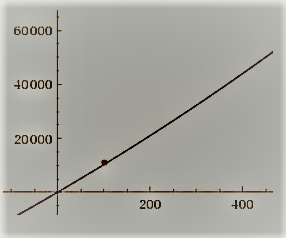
Therefore, The graph is:
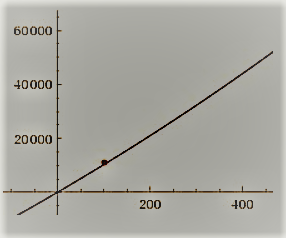
Page 159 Problem 12 Answer
Given: Robbie opens an account at a local bank by depositing $100.
The account pays 2.4% interest, compounded weekly. He deposits $100 every week for three years.
Find: Using the graph, what is the approximate balance after 2 years.
According to question,
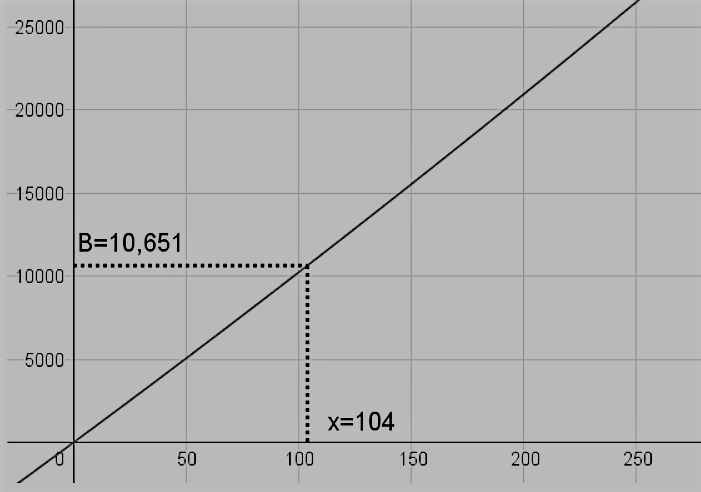
The approximate balance after 2 years is $10,651.
Hence, The graph of solution is:
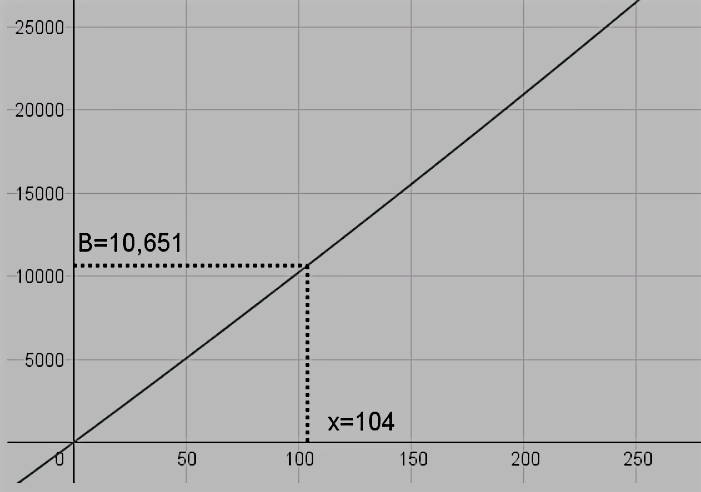
Chapter 3 Exercise 3.7 Banking Services Walkthrough Cengage
Cengage Financial Algebra 1st Edition Chapter 3 Exercise 3.7 Banking Services Page 159 Exercise 1 Answer
Given: Suppose $600 is deposited into an account every quarter.
The account earns 5% interest, compounded quarterly.
Find: What is the future value of the account after 5 years.
According to question,
B=P((1+r/n)nt−1)/r/n
=600((1+0.05/4)4×5−1)/0.05/4
≈13,537.79
Hence, the future value of the account after 5 years is:$13,537.79
Page 159 Exercise 2 Answer
Given: Suppose $600 is deposited into an account every quarter. The account earns 5% interest, compounded quarterly.
Find: Write the future value function if x represents the number of quarters.
According to question,
B=P((1+r/n)nt−1)/r/n
=600((1+0.05/4)4×x/4−1)/0.05/4
=600((1+0.0125)x−1)/0.0125
=48,000((1.0125)x−1)
Hence, the future value function if x represents the number of quarters is:
=48,000((1.0125)x−1)
Page 159 Exercise 3 Answer
Given: Suppose $600 is deposited into an account every quarter. The account earns 5% interest, compounded quarterly.
Find: Use a graphing calculator to graph the future value function.
According to question,
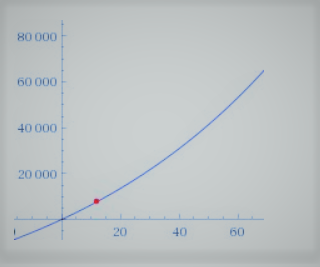
Hence, The graph is:
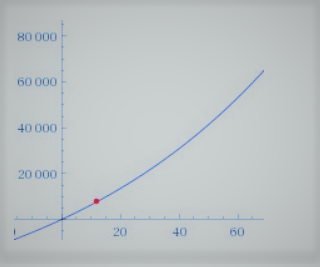
Cengage Financial Algebra 1st Edition Chapter 3 Exercise 3.7 Banking Services Page 159 Exercise 4 Answer
Given: Suppose $600 is deposited into an account every quarter. The account earns 5% interest, compounded quarterly
Find: Using the graph, what is the approximate balance after 3 years.
According to question,
The approximate balance after 3 years is $7,716.
Then, The graph is:
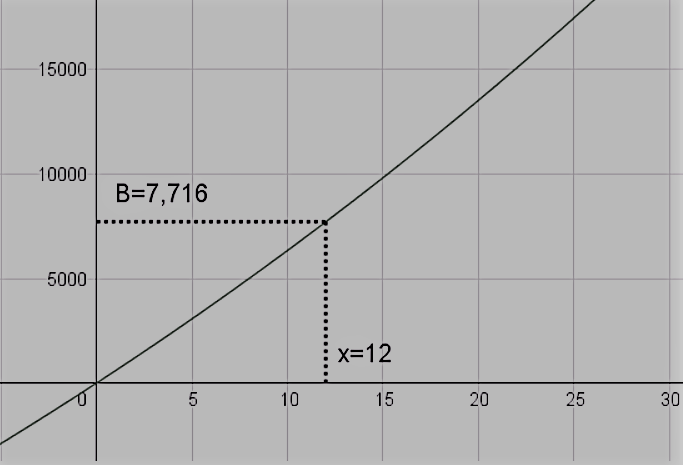
Hence, The graph is:

Cengage Financial Algebra Banking Services Exercise 3.7 Solutions
Page 160 Exercise 5 Answer
To find: Suppose that you invest $2,000 at a 1% annual interest rate.
Use your calculator to input different values for t in the compound interest formula.
What whole number value of t will yield an amount closest to twice the initial deposit?
B=P(1+r/n)n×t
40000=20000(1+0.06/1)1×t
40000=20000(1.06)t
2=(1.06)t
ln2=ln(1.06)t
ln2=tln(1.06)
ln2/ln1.06=t
Evaluate: t=ln2/ln1.01≈70
Thus we note that the amount will be twice the initial deposit after roughly 70 years.
Hence the answer is 70 years
Cengage Financial Algebra 1st Edition Chapter 3 Exercise 3.7 Banking Services Page 160 Exercise 6 Answer
To find: Suppose that you invest $4,000 at a 2% annual interest rate.
Use your calculator to input different values for t in the compound interest formula.
What whole number value of t will yield an amount closest to twice the initial deposit?
B=P(1+r/n)n×t
40000=20000(1+0.06/1)1×t
40000=20000(1.06)t
2=(1.06)t
ln2=ln(1.06)t
ln2=tln(1.06)
ln2/ln1.06=t
Evaluate: t=ln2/ln1.02≈35
Thus we note that the amount will be twice the initial deposit after roughly 35 years.
Page 160 Exercise 7 Answer
To find; Suppose that you invest $20,000 at a 6% annual interest rate.
Use your calculator to input different values for t in the compound interest formula.
What whole number value of t will yield an amount closest to twice the initial deposit?
B=P(1+r/n)n×t
40000=20000(1+0.06/1)1×t
40000=20000(1.06)t
2=(1.06)t
ln2=ln(1.06)t
ln2=tln(1.06)
ln2/ln1.06=t
Evaluate: t=ln2/ln1.06≈12
Thus we note that the amount will be twice the initial deposit after roughly 12 years.
Hence we note that the amount will be twice the initial deposit after roughly 12 years.
Cengage Financial Algebra 1st Edition Chapter 3 Exercise 3.7 Banking Services Page 160 Exercise 8 Answer
To find: Albert Einstein noticed a very interesting pattern when an initial deposit doubled.
In each of the three examples above, multiply the value of t that you determined times the percentage amount.
For example, in a. multiply t by 1. What do you notice?
First example of part (a)
Result part (a):
t=70
r=1%
We need to multiply the value of t by the percentage amount of r.
t×r=70×1=70
Second example of part (b)
Result part (b):
t=35
r=2%
We need to multiply the value of t by the percentage amount of r.
t×r=35×2=70
Third example of part (c)
Result part (c):
t=12
r=6%
We need to multiply the value of t by the percentage amount of r.
t×r=12×6=72
We notice that the product in all three examples is equal to 70 or 72 , thus the product is always close to 72 .
Hence We notice that the product in all three examples is equal to 70 or 72 , thus the product is always close to 72 .
How To Solve Cengage Financial Algebra Chapter 3.7 Banking Services
Page 160 Exercise 9 Answer
To find: Einstein called this the Rule of 72 because for any initial deposit and for any interest percentage, 72 (percentage) will give you the approximate number of years it will take for the initial deposit to double in value.
Einstein also said that “If people really understood the Rule of 72 they would never put their money in banks.”
Suppose that a 10-year-old has $500 to invest.
She puts it in her savings account that has a 1.75% annual interest rate.
How old will she be when the money doubles?
Given:r= Interest rate =1.75%
By Einstein’s rule of 72 , we know that the product of the time $t$ and the interest rate percentage $r$ needs to be equal to 72 when we double the money.
t×r=72
In this case: r=1.75
t×1.75=72
Divide each side by 1.75:
t=72
1.75
≈41
This then means that the money doubles in roughly 41 years.
Since she is currently 10 years old, the money will double when she is roughly 10+41=51 years.
Hence the answer is 51 years old
